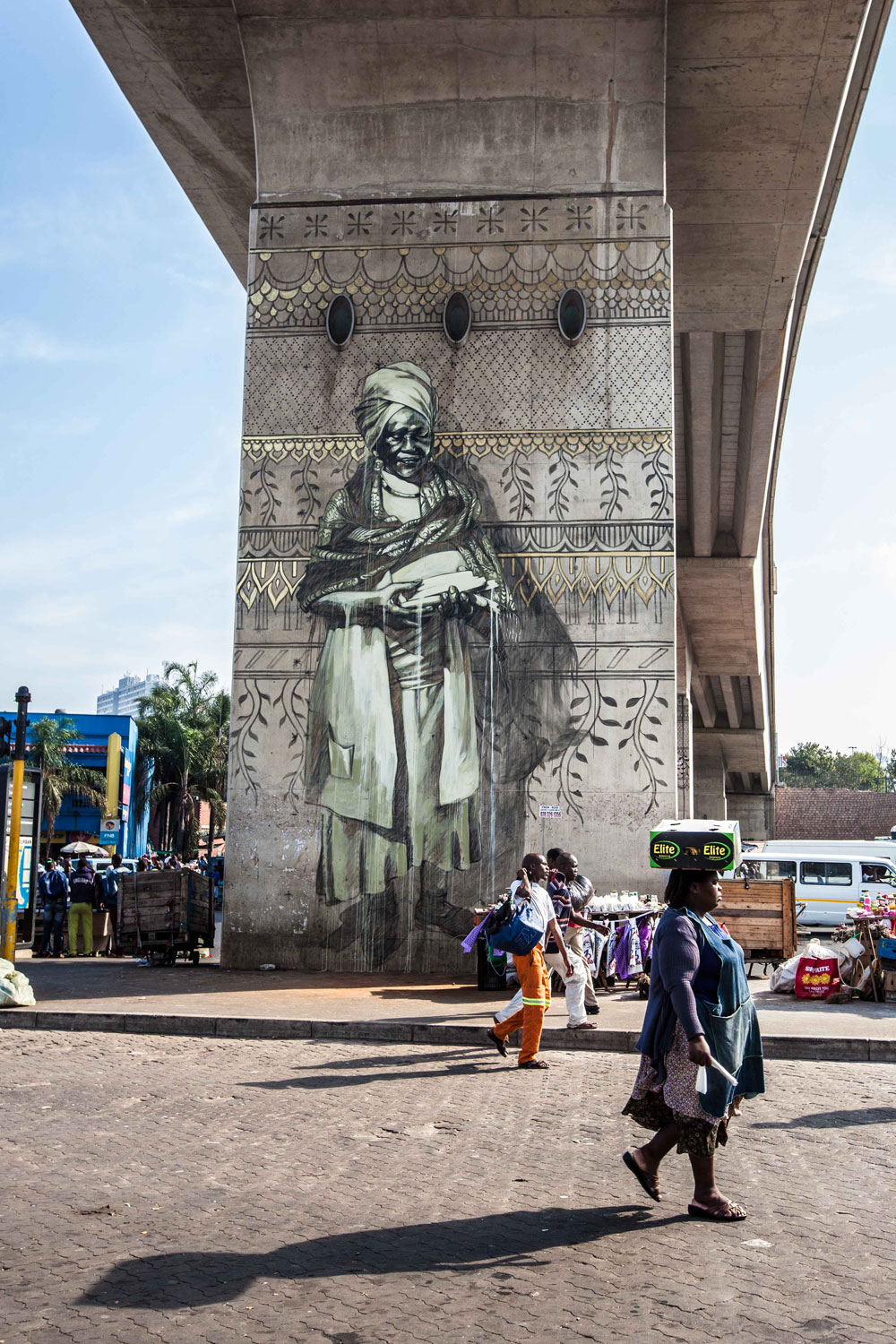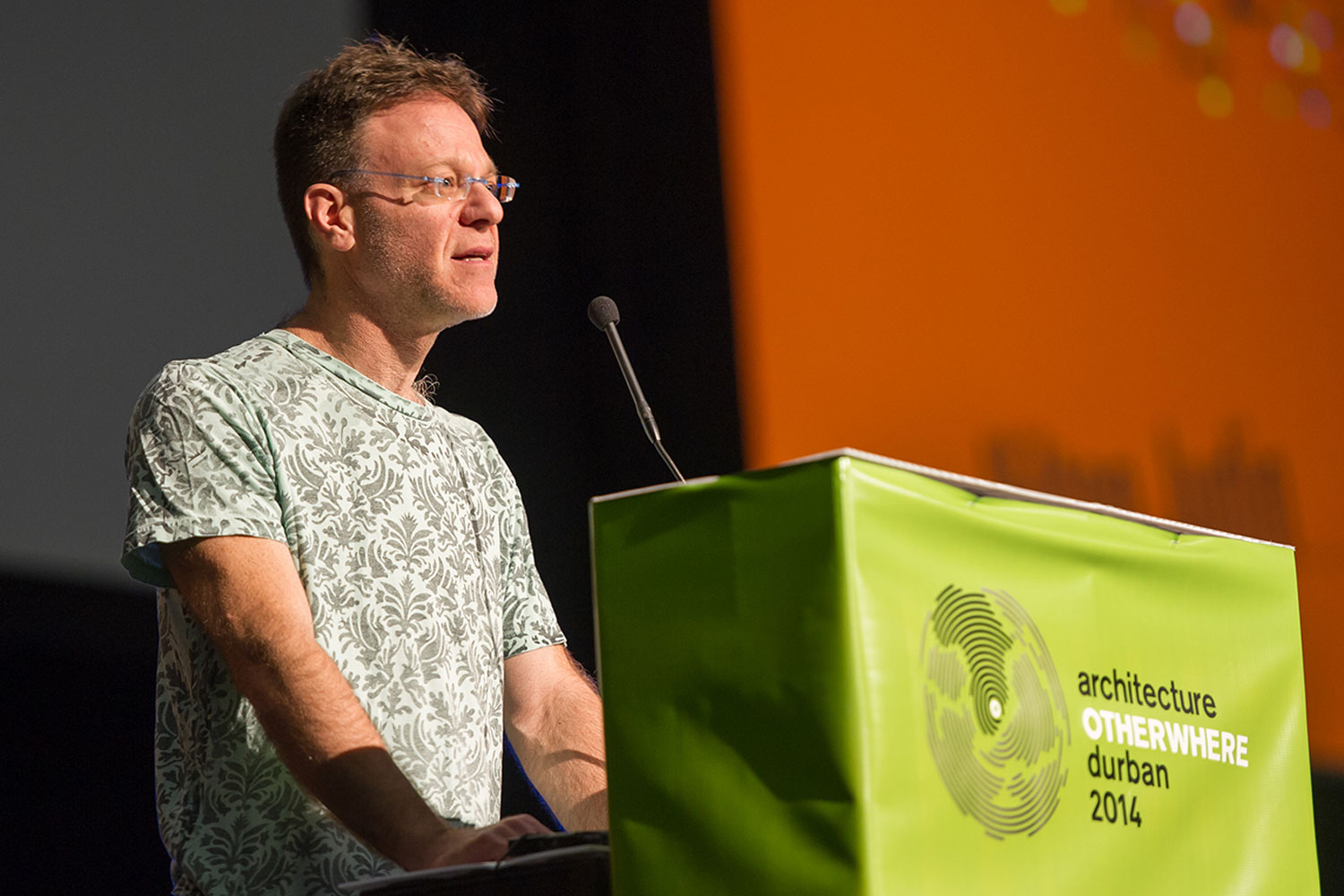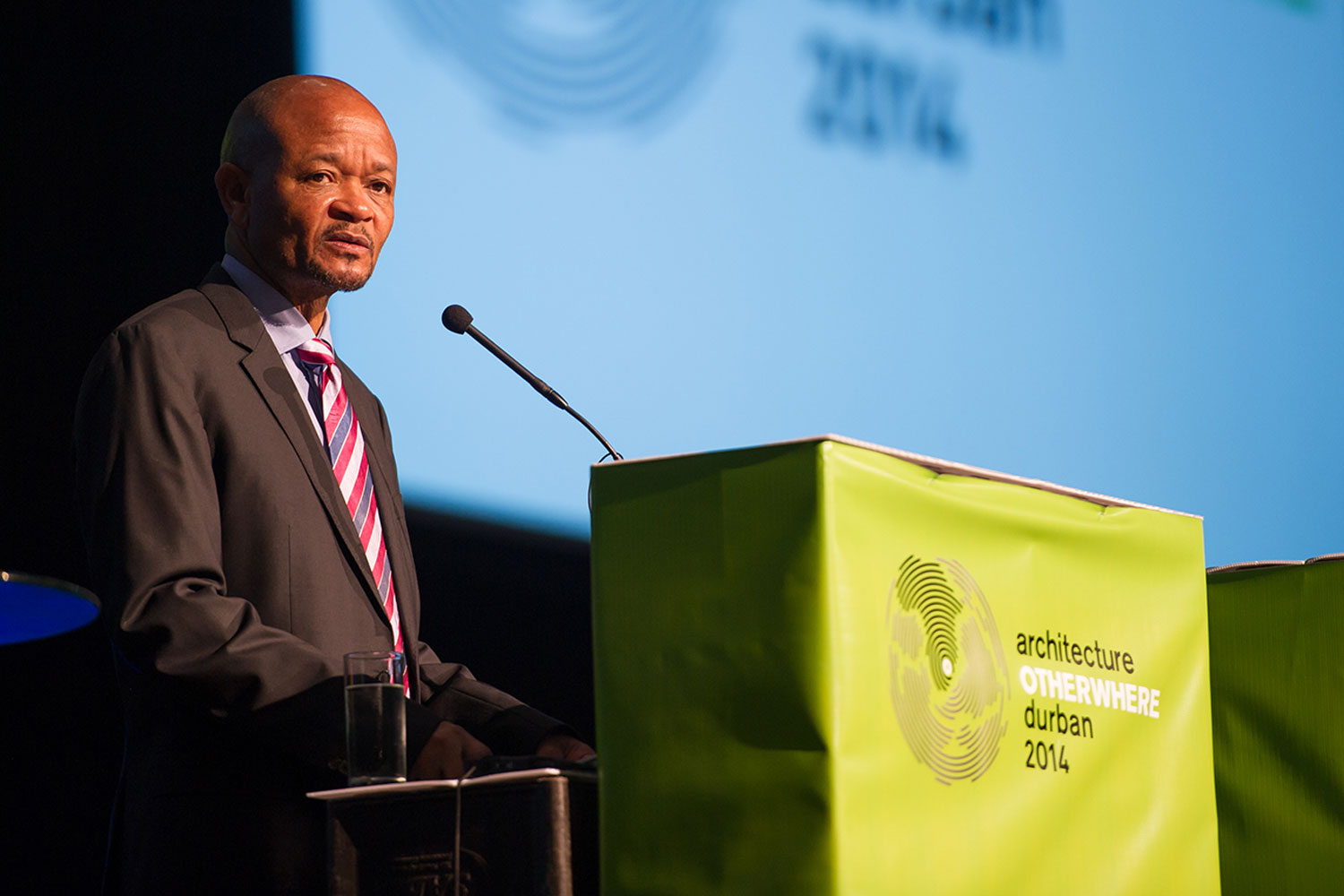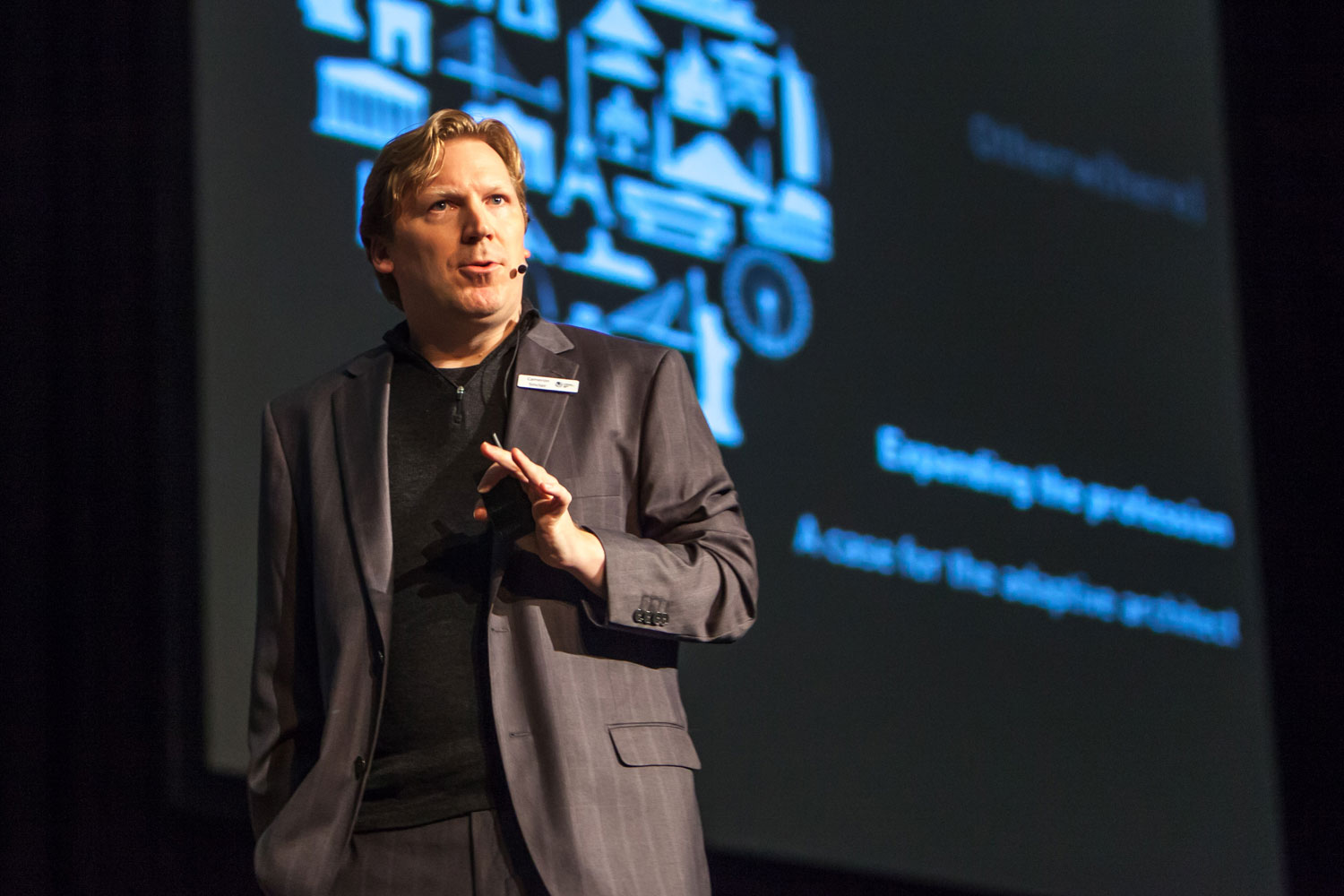The 25th world congress of the International Union of Architects is being held at the Inkosi Albert Luthuli International Convention Centre in Durban.
The 25th world congress of the International Union of Architects (UIA), a professional body representing 1.3-million architects in 124 countries, opened in lacklustre fashion on Monday at the Inkosi Albert Luthuli International Convention Centre in Durban.

The printed programme for the three-day event, known as UIA2014, promised the assembled delegates from 96 countries a keynote address by poet and indigenous knowledge champion Mongane Wally Serote.
Instead, they were made to wait an hour before a cavalcade of political dignitaries – including two national ministers, a provincial premier and city mayor – were ushered into the auditorium and shown to hastily arranged front-row seating. “Architecture is political,” remarked Hilton Judin, an adjunct professor in the School of Architecture and Planning at the University of the Witwatersrand, who introduced the session.
Judin did not intend his remark to be a comment on the dour protocol-obsessed proceedings that followed, but it was unavoidable. Probably best known outside the academy for his innovative 1998 exhibition and publishing project Blank ___ Architecture, Apartheid and After, Judin further remarked on the “insecure politics that bounds our age” and how this is reflected in contemporary architecture. “We have nothing to hide, we have much to learn,” he offered during his urgent yet lyrical address.

Eschewing stuffy political decorum, Judin wore a floral-print T-shirt for the occasion. His welcome address was followed by a brief dance performance that ended with an injunction to sing the national anthem.
Six unscheduled speakers then consecutively took to the stage, each observing protocol by acknowledging, in order of perceived importance, Higher Education and Training Minister Blade Nzimande, his compatriot in public works Thembelani Nxesi, KwaZulu-Natal Premier Senzo Mchunu, eThekwini Mayor James Nxumalo and visiting UIA president Albert Dubler.
Key address
“I’m impressed with the podium,” remarked Mchunu, pointing to the lime green UIA2014 banner draped over stacked beer crates in front of his lectern. The rapidly dwindling audience chuckled at this rare bit of levity.

The slight intervention Mchunu pointed his audience to repeats itself across all the various rooms where UIA2014 delegates are meeting to listen to scientific papers and participate in plenary sessions. Easy to miss, the structure marks an attempt by organisers to draw attention to the contingent and often neglected forms of architecture that fall beyond the remit of big industry events such as UIA2014.
By the time Nxesi took to the stage to deliver what turned out to be the session’s key address, a third of the delegates – they are mostly white and male – had already flooded out of the auditorium. Nxesi recapitulated how the National Development Plan was rolling out infrastructure to drive national and regional economic development and job creation.
“At the heart of the infrastructure development programme is the need for specialised built environment skills and expertise necessary to drive the programme,” he said. He added that he is aware of the disjuncture between ambition and fact in his statement. “We cannot be complacent that 20 years into democracy in South Africa, only 24% of built environment professionals are black; 9% are female.”
‘More radical phase’
In a speech that felt more party political than diplomatically benign, as had been the tone struck by earlier speakers, Nxesi remarked: “As government, we have said that this next five-year term of government marks a second more radical phase of transition to democracy.”
The built environment sector, which includes architectural practitioners, would not be immune from the ministry’s stronger transformation focus. His department, Nxesi warned, will be working “very closely” with the Charter Councils to monitor BBBEE scorecards and transformation objectives.
He allotted some of the blame for ongoing service delivery protests to industry professionals: “As government we are also acutely aware that at the heart of most service delivery protests lies the glaring paucity of our built professions skills to expedite provision of houses, water, sanitation, roads and other basic public infrastructure.”
Nzimande took to the stage after Nxesi to participate in a debate with Professor Sipho Seepe, a special adviser to public service and administration minister Lindiwe Sisulu. Because of time constraints, Seepe and Nzimande only offered an introductory remark each – to a hall with about a third of its original delegates.
For his part, Nzimande played the part of mellow state functionary musing on the highs and lows of his ministerial portfolio. He reiterated Nxesi’s analysis that the architectural profession is too white and male, but acknowledged that his department has classified architecture as a scarce skill.
Political stagecraft
While the dour political stagecraft of the morning’s opening session failed to resonate with many delegates, Nina Saunders, an architect in the strategic architectural projects branch of the eThekwini Municipality and member of the UIA organising committee, said that both ministers had flagged important national issues. Opening formalities dispensed with, architects, urban planners, educators and professionals from related disciplines headed off to various venues to get down to the hard business of congressing.
In one auditorium, visiting Japanese architect Toyo Ito, winner of the 2013 Pritzker Architecture prize – architecture’s Nobel prize – led a practical talk on sustainable architecture. In another, photographer David Southwood and architectural scholar Nic Coetzer, both from Cape Town, presented a slideshow and talk focused on a group of Tanzanian men living rough in urban interstices on Cape Town’s foreshore.
“How can this be a place of dwelling?” asked Coetzer. A similar focus on exceptional structures that don’t usually make the lifestyle glossies but resonate with UIA2014 “architecture otherwhere” rubric featured in Cameron Sinclair’s end-of-day keynote. Winner of the 2006 Ted Prize, Sinclair co-founded Architecture for Humanity, a nongovernmental organisation that delivers architectural solutions in disaster and conflict zones, in 1999.

In a breezy presentation style typical of Cape Town’s annual Design Indaba, he revisited earthquake-linked projects in Haiti and Japan. Anecdote rich, Sinclair’s talk played well to the full auditorium, even if it offered few practical solutions to the core challenge facing local architects, proposed earlier by Nxesi in his unapologetic talk. “We need architects and town planners committed to a new non-racial and egalitarian vision of spatial development,” said Nxesi.
Further updates on UIA2014 will appear this week.